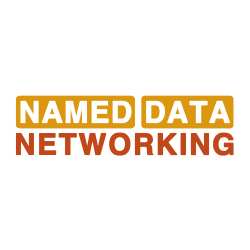
A consortium funded by the U.S. National Science Foundation to explore the possibility of replacing the core protocol used by the Internet aims to test the proposal using applications based around the Internet of Things (IoT) and high-bandwidth video delivery.
However, doubts loom over whether such a large-scale modification of the Internet is desirable.
Originally put forward as an idea by PARC researcher Van Jacobson, Named Data Networking (NDN) has evolved into a technology that could ultimately supplant the Internet Protocol (IP) as the key packet format for the Internet. NDN focuses on data, rather than the locations of hosts that store it. Clients looking for data create "interest packets" that specify the name of each piece of data they wish to receive. Routers use prefixes stored in the name, much like IP prefixes, to work out where to forward requests for the data. Rather than holding the paths to each network-connected host as they would with IP routing, each NDN router instead uses a Pending Interest Table (PIT) to store a record of each port on which it receives an interest. These stored interests help the routers forward data they receive back to the requester.
According to Jacobson, the architecture is optimized for multicasting. As the same interest can be registered by multiple clients, the router will copy the data to any ports that have the same recorded interest. Since data elements are no longer located by their IP address, they can be held anywhere on the network (and potentially inside routers themselves), allowing the data to migrate closer to regions of high request activity.
At the first NDN community (NDNcomm) meeting at the University of California, Los Angeles (UCLA) in early September, Jacobson outlined a number of test applications that are being used to test features of the proposed architecture. Two focus on IoT applications, which are expected to bring billions more devices to the Internet. "Applications driving that part of the project will include building monitoring and control. At UCLA, they will be controlling buildings around the campus using NDN. The second one concentrates on health," he said
Health applications provide a way to explore the issues of data privacy using NDN. The protocol demands that each piece of content be signed by a key that binds the data content to its name. On top of this framework, developers are expected to build secure data-access applications for areas such as smart health.
At the NDNcomm meeting, equipment makers showed an interest in NDN for delivering large quantities of content more cost-effectively. Guo Qiang Wang, principal researcher at Huawei, said one possibility for NDN that is not practical with an IP-based model is to optimize the use of point-to-point optical-fiber connections for high-speed delivery: "You could put a 5GB movie directly into a digital wrapper – the NDN protocol is effectively elastic."
Massimo Gallo, a member of the technical staff at Alcaltel-Lucent, said the company is currently working on two possible use-cases that could employ NDN. In one, "We are working with our CDN [content-delivery networking] business division. We think there may be some mechanisms in the NDN protocol that can be very useful in that field."
The other area is mobile backhaul, the links between cellular antennas and a wireless operator’s core network, which are often the most expensive part of the network to support, as they require high-bandwidth connections to often-remote locations. "If you are able to cache something in the mobile backhaul, you can gain performance for both the users and operators," said Gallo.
A number of researchers believe the shift to a protocol that is incompatible with the current IP-based infrastructure is unnecessary. Jon Crowcroft, Marconi Professor of Networked Systems in the Computer Laboratory of the University of Cambridge, pointed to services already in place such as Akamai, as well as peer-to-peer distribution systems such as BitTtorrent.
Research into a system called idICN (incrementally deployable Information-Centric Networking) by a team from Carnegie Mellon University (CMU), Duke University, Toronto University, and the University of California Berkeley, together with colleagues from Akamai and VMware, used a large-scale trace-drive analysis and simulation to demonstrate that a number of content-delivery improvements claimed for protocols such as NDN could be achieved using existing IP-based networks. The work found that content tends to display a Zipf-like (long-tailed) distribution of popularity; although some content would be hugely popular, much of the remainder was requested by a small number of users. The team concluded deploying caches at the edge of the network rather than its core would serve most of this demand. Such an architecture would allow incremental deployment by individual ISPs without needing the cooperation of other operators, and all within an IP-based framework.
Team member Vyas Sekar, an assistant professor at CMU, said, "For content delivery, we believe idICN offers most of the gain with less of the pain, but there may be unexplored benefits that NDN may give, although this remains to be seen."
Said Crowcroft, "There are a lot of good people solving the various niggling problems that the NDN architecture brings up and there’s a pretty good story for all of them, whether in naming systems, integrity checking or security, but there just isn’t really enough demand for it to justify the effort of building replacements for IP routers that would run NDN native forwarding code at 21st-century speeds of 100Gb/s or more."
Chris Edwards is a Surrey, U.K.-based writer who reports on electronics, IT, and synthetic biology.



Join the Discussion (0)
Become a Member or Sign In to Post a Comment